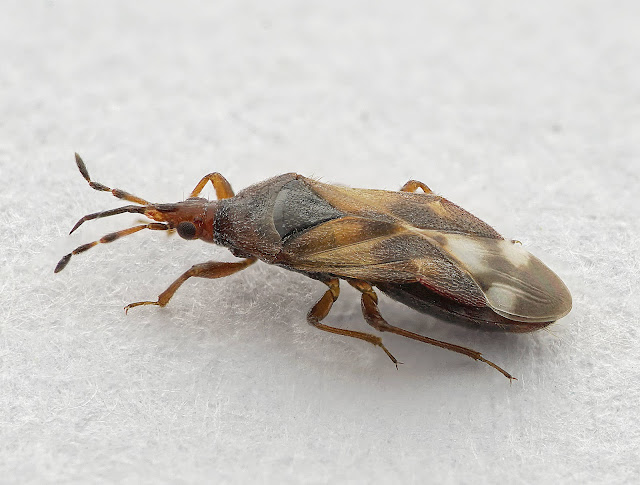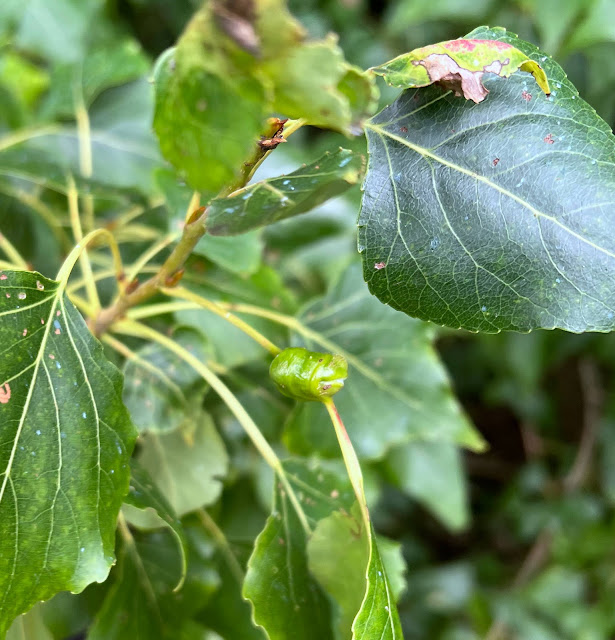A new species of flower bug joins the VC55 list.
Anthocoris ("flower seed") minki (after Wilhelm Mink, 1807–1883, German entomologist who collected the type specimen)
For the past year the VC55 Bug Team has been hunting down the gaps in our
Anthocoris list. Apart from general under-recording, some of these are hard to understand apart from the difficulties of identifying the species in this genus. Back in January we ticked off
Anthocoris butleri and
put a few dots on the map, but then we ran out of Box, the host plant, and had to stop.
Earlier in the year I had checked spiral petiole galls on Poplar trees without success but they have now matured and this week my colleague was able to make the first VC55 record for Anthocoris minki (shown above). This species is dependent on Pemphigus aphids such as Pemphigus spyrothecae and develops entirely within the aphid-caused galls.
By collecting tightly closed galls and opening them indoors, contamination with other Anthocoris species is avoided although of course the I.D. still needs to be checked carefully. That would be easier to do if we could find a male, but to date all the VC55 specimens found have been female. To date we have found Anthocoris minki at four different sites (not bad for a weeks work) - and now, we have just about run out of Poplar, which is not common in VC55 and as an ornamental planting, even more poorly recorded. To date, I have found:
Site 1: 54 galls examined, 1 adult found (2% occupancy).
Site 2: 100 galls examined, 1 adult, 1 nymph, 1 shed found (3% occupancy).
Site 3: 90 galls examined, 4 adults, 2 nymphs found (6% occupancy).
Overall: 4% occupancy.
If you're concerned about some idiot collecting this number of galls, these are large trees and the number collected is far less than 1% of those present on any one tree. All the bugs have been found in separate galls. Whether this is because the females lay one egg per location or because more than one bug per gall inevitably results in early stage cannibalism I don't know.
Anthocoris minki nymph
Strictly speaking I couldn't swear that the nymphs are Anthocoris minki without rearing (not easy to do as they live in closed galls - Schrödinger's nymphs - but since they are in closed galls, good enough).
So what is the Anthocoris Holy Grail? Rob Ryan has documented finding a complete set of shed skins within a gall representing every instar of development. So far I have found one shed, and that's not easy with all the horrid aphid crap within the galls (I don't like aphids), but hey, 20% of the Grail for a week's work isn't a bad haul.
Shed skin found in a gall
A week in and I'm drowning in Anthocoris minki, but starting to wonder if males exist...
Many thanks to Jim Flanagan and my colleagues for helpful discussions.
Sources:
Péricart J. (1972) Hémiptères Anthocoridae, Cimicidae et Microphysidae de l'Ouest paléarctique. Faune de l'Europe et du bassin méditerranéen, vol 7. Bulletin de la Société entomologique de France, 78(9), 337-338. https://www.persee.fr/docAsPDF/bsef_0037-928x_1973_num_78_9_29150_t1_0337_0000_2.pdf





No comments:
Post a Comment
Comments welcome, I will respond as soon as I can.